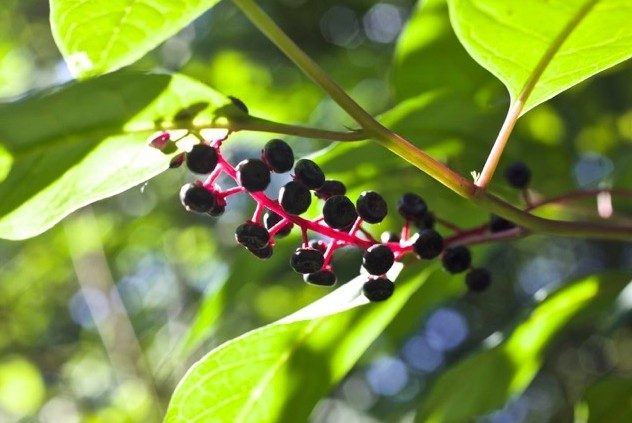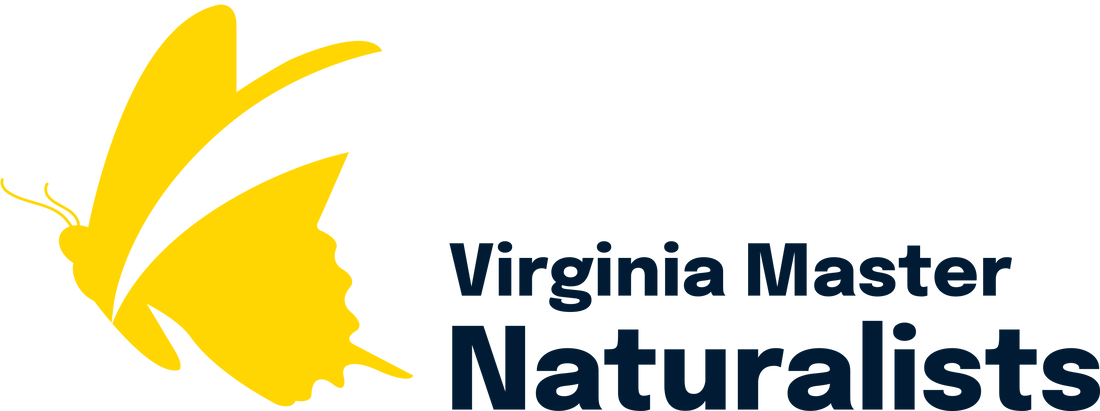Originally published as press release by Krista Timney, Virginia Tech College of Natural Resources and Environment
Just in time for the summer months when more people venture into the outdoors — and come into contact with poison ivy and other plants that are best avoided — there is a new reference guide to some of Virginia’s poisonous plants.
The Socrates Project: Poisonous Plants in Virginia is a collaborative effort between the Virginia Master Naturalist Program and Virginia Cooperative Extension.
“This project is the first of its kind in a couple of ways. It’s the first publication of its kind focused on poisonous plants in Virginia, and it was a totally volunteer-driven effort,” said Michelle Prysby, statewide coordinator of the Virginia Master Naturalist Program and Extension associate for Virginia Tech’s College of Natural Resources and Environment.
The core group of volunteers who produced the guide was led by Alfred Goossens of the Old Rag Master Naturalists chapter, which serves Culpeper, Fauquier, Greene, Madison, Orange, and Rappahannock counties. He saw the need for the project owing to the high incidence of contacts with poisonous plants, many of which land people in emergency rooms, a fact he confirmed with the director of the Blue Ridge Poison Center.
Recent reports that the noxious giant hogweed had been spotted in Clarke County, Virginia, which was confirmed by Virginia Tech researchers, has raised additional interest in poisonous plants. Goossens had already planned to include giant hogweed in the publication, as he was familiar with it having grown up in Holland.
Once Goossens enlisted the support of his chapter members, the project took about two years to complete. Volunteers settled on the format, wrote the data sheets for the individual plants, and contributed photographs. There was also a peer-review process to ensure the accuracy of the material.
In addition to Prysby’s support, Senior Extension Agent Adam Downing wrote one of the data sheets and leveraged his connections to help with the publication. “This project will benefit many Virginians by informing them of the realistic hazards with our key poisonous plants,” he said. “We don’t want to cause alarm, but do want people to be able to enjoy the outdoors by being better informed of a few plants to notice and treat appropriately.”
In order to ensure that people remain aware of which plants to watch for, Goossens is also working with Master Naturalist chapters across the state on a second edition of the guide that will include additional poisonous species. The project team members are working on compiling a list of additional species to include, and they invite VMN volunteers from across the state to send in photos of poisonous plants in their region.
“Now it’s a Virginia project. It changed from just the Piedmont to all of Virginia because people all over the state need this info,” Goossens said.
“The Socrates Project: Poisonous Plants in Virginia,” publication number CNRE-13NP, is available as a downloadable pdf file at the Virginia Cooperative Extension website. For more information on the project, contact the team at [email protected].
Just in time for the summer months when more people venture into the outdoors — and come into contact with poison ivy and other plants that are best avoided — there is a new reference guide to some of Virginia’s poisonous plants.
The Socrates Project: Poisonous Plants in Virginia is a collaborative effort between the Virginia Master Naturalist Program and Virginia Cooperative Extension.
“This project is the first of its kind in a couple of ways. It’s the first publication of its kind focused on poisonous plants in Virginia, and it was a totally volunteer-driven effort,” said Michelle Prysby, statewide coordinator of the Virginia Master Naturalist Program and Extension associate for Virginia Tech’s College of Natural Resources and Environment.
The core group of volunteers who produced the guide was led by Alfred Goossens of the Old Rag Master Naturalists chapter, which serves Culpeper, Fauquier, Greene, Madison, Orange, and Rappahannock counties. He saw the need for the project owing to the high incidence of contacts with poisonous plants, many of which land people in emergency rooms, a fact he confirmed with the director of the Blue Ridge Poison Center.
Recent reports that the noxious giant hogweed had been spotted in Clarke County, Virginia, which was confirmed by Virginia Tech researchers, has raised additional interest in poisonous plants. Goossens had already planned to include giant hogweed in the publication, as he was familiar with it having grown up in Holland.
Once Goossens enlisted the support of his chapter members, the project took about two years to complete. Volunteers settled on the format, wrote the data sheets for the individual plants, and contributed photographs. There was also a peer-review process to ensure the accuracy of the material.
In addition to Prysby’s support, Senior Extension Agent Adam Downing wrote one of the data sheets and leveraged his connections to help with the publication. “This project will benefit many Virginians by informing them of the realistic hazards with our key poisonous plants,” he said. “We don’t want to cause alarm, but do want people to be able to enjoy the outdoors by being better informed of a few plants to notice and treat appropriately.”
In order to ensure that people remain aware of which plants to watch for, Goossens is also working with Master Naturalist chapters across the state on a second edition of the guide that will include additional poisonous species. The project team members are working on compiling a list of additional species to include, and they invite VMN volunteers from across the state to send in photos of poisonous plants in their region.
“Now it’s a Virginia project. It changed from just the Piedmont to all of Virginia because people all over the state need this info,” Goossens said.
“The Socrates Project: Poisonous Plants in Virginia,” publication number CNRE-13NP, is available as a downloadable pdf file at the Virginia Cooperative Extension website. For more information on the project, contact the team at [email protected].



 RSS Feed
RSS Feed